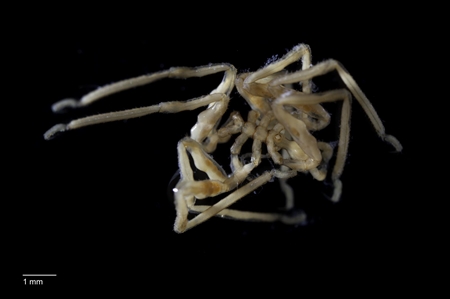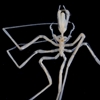Other Names
- Sea spider
General Description
Body with proboscis projecting outward from front, with the mouth at the tip. Central body (trunk) behind the proboscis, with a raised, rounded area (tubercle) bearing four eyes. Eight segmented walking legs attached to the sides of the trunk. Small abdomen behind trunk. Leg span about 2 cm.
Biology
Young adults (sub-adults) and egg-bearing adults recorded from November-March, but this may reflect seasonal field collecting rather than a breeding cycle. Males carry the eggs, holding them between body parts called ovigers that hang under the animal.
Habitat
Seagrass and seaweed, to depth of 135 m.
Seagrass meadows
Reefs
Distribution guide
South-eastern Australia, including central Victoria.
Species Group
Depth
Shallow (1-30 m)
Deep ( > 30 m)
Water Column
Max Size
2 cm
Commercial Species
No
Global Dispersal
Native to Australia
Conservation Status
- DSE Advisory List : Not listed
- EPBC Act 1999 : Not listed
- IUCN Red List : Not listed





